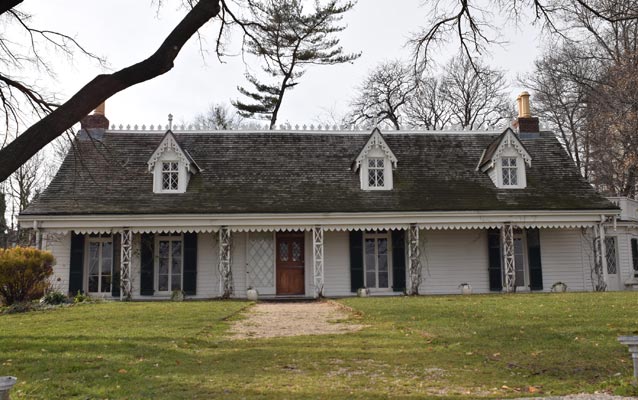Last updated: March 19, 2019
Place
Elizabeth Alice Austen House--Clear Comfort

Photograph courtesy of New York State Historic Preservation Office
The house is primarily significant as the most important resource associated with the life and work of nationally significant photographer Alice Austen (1866-1952), who resided here from about 1867, when she was an infant, until 1945, near the end of her life. Austen is considered one of the first women photographers in America to work outside of the confines of a studio. Her early body of work, which chronicles Staten Island, New York City, and other places and particularly focuses on the life of her family, friends, and social circle, is considered among the finest produced in America in the late nineteenth and early twentieth centuries. In the 1890s, Austen's work became increasingly more public. She ventured into the streets of Manhattan to photograph immigrants at work and also traveled to local Quarantine stations to document their operations, as well as the life of immigrants living at these stations.
Between 1917 and 1945, Austen shared the house with her companion, Gertrude Tate, with whom she had an intimate, fifty-three-year, same-sex relationship. Austen was what has become known as a “New Woman,” breaking from contemporary societal strictures on feminine behavior. Austen and her friends were among many middle- and upper-class- educated women of the late nineteenth century who did not feel that they needed a man to live a successful life. Austen’s non-traditional relationship with Tate and her exploration of gender and societal norms were illustrated in her photographs, creating a unique group of transgressive images of life that was out of the ordinary for its time. Although Alice Austen’s life and relationships with other women are crucial to an understanding of her work, for many years this interpretation of her work went unrecognized, as it was assumed that acknowledgment of her same-sex interests would damage her reputation.
The Alice Austen House meets National Register criteria A, B, and C. It is significant under criterion A in the area of community planning as representative of the changing character of Staten Island from the time that the island was primarily occupied by farms, through the nineteenth-century era when the island hosted a significant number of rural estates. The Austen House was initially constructed c. 1690-1700 as a modest farmhouse. The house was expanded in several campaigns during the eighteenth century before it was purchased by the Austen family in 1844 and converted over the next several decades into a picturesque country estate set along the Narrows waterfront on the eastern shore of Staten Island. The house retains features illustrating this transition. The house is also eligible under criterion C as a rare surviving example of Colonial era architecture in New York City, as well as for its important alterations in the picturesque Gothic Revival style, reflecting the influence of Andrew Jackson Downing and Alexander Jackson Davis and dating from the Austen family’s period of occupancy.
Link to National Register of Historic Places file
Link to National Historic Landmark file
